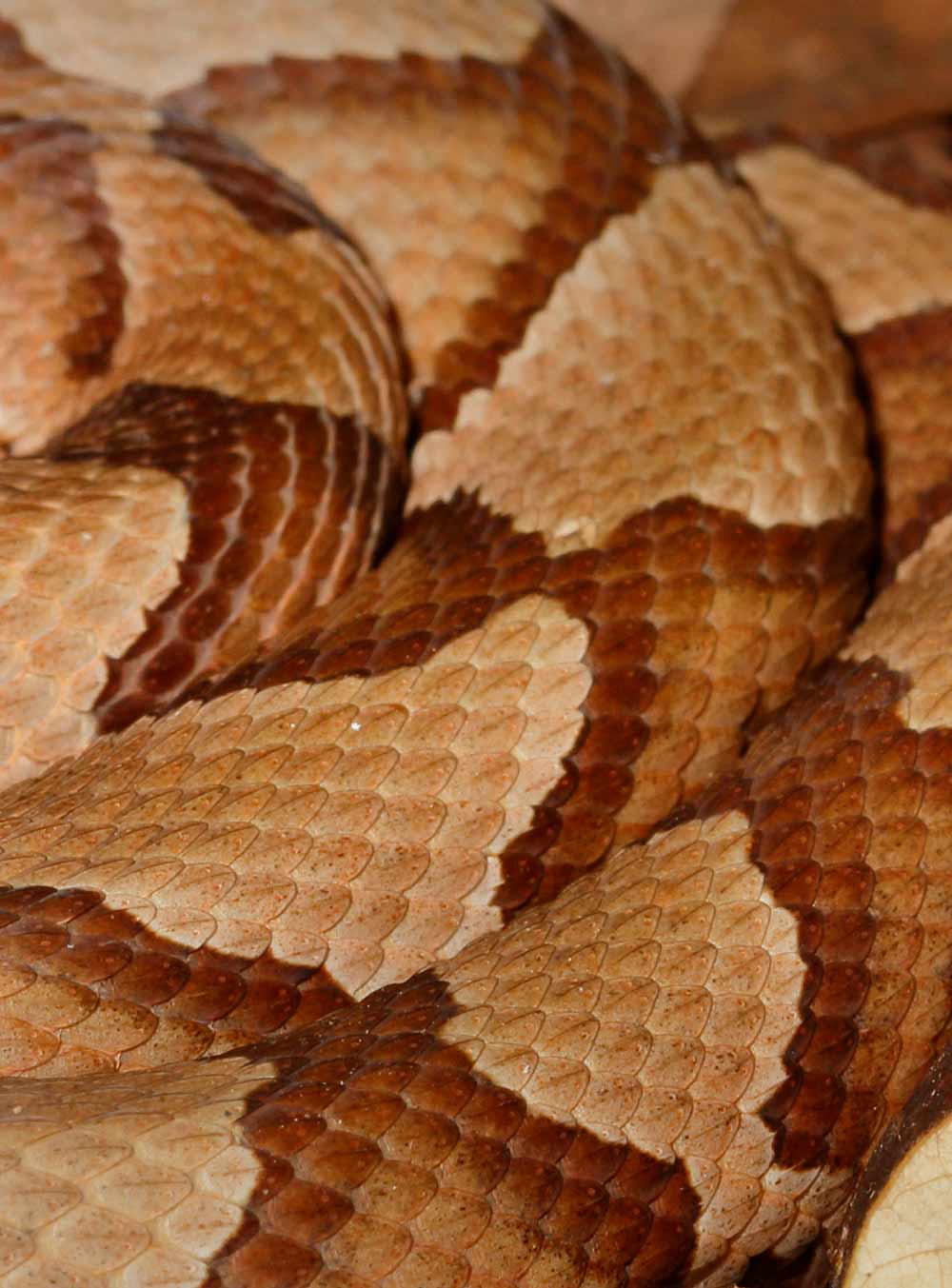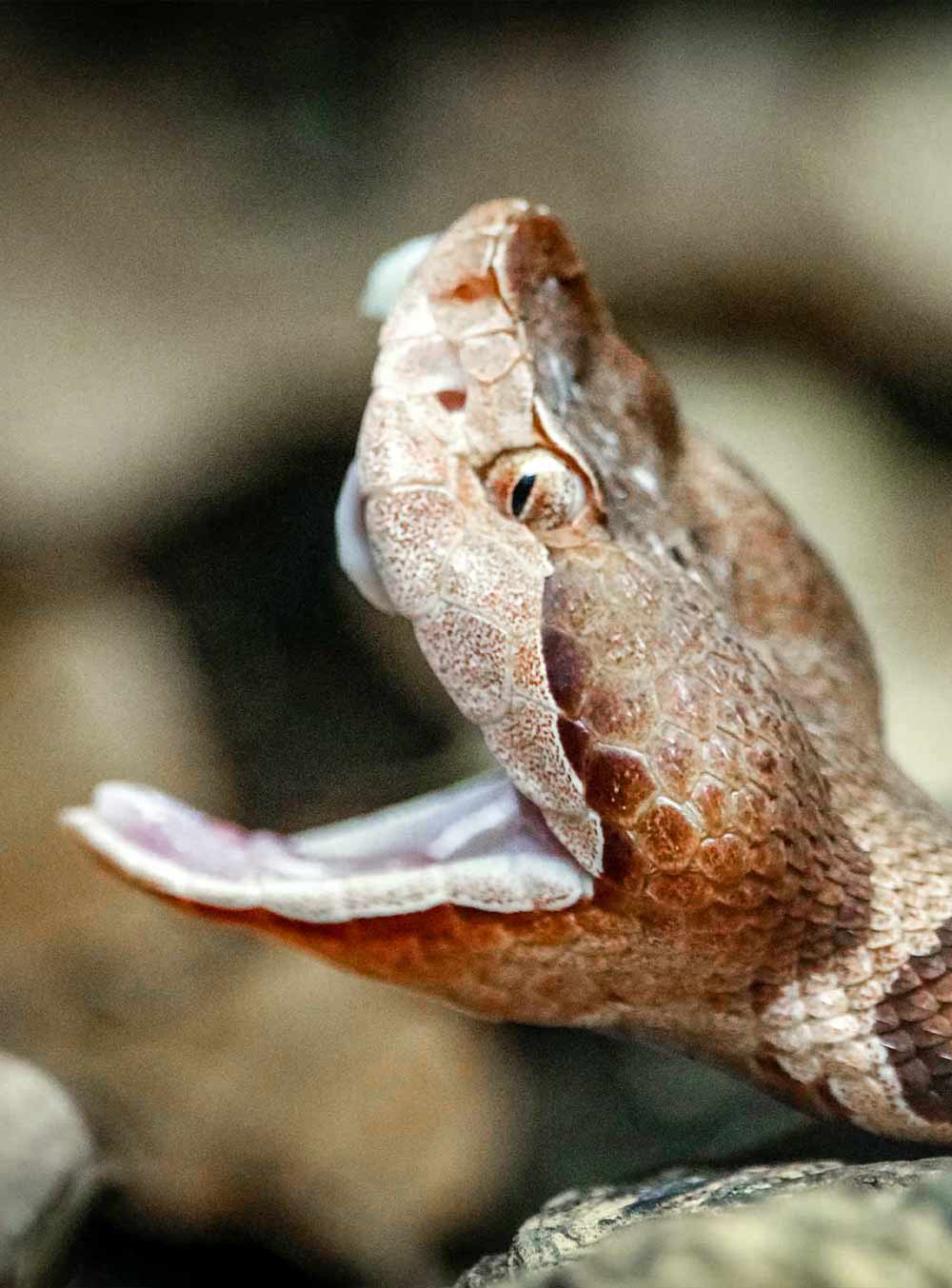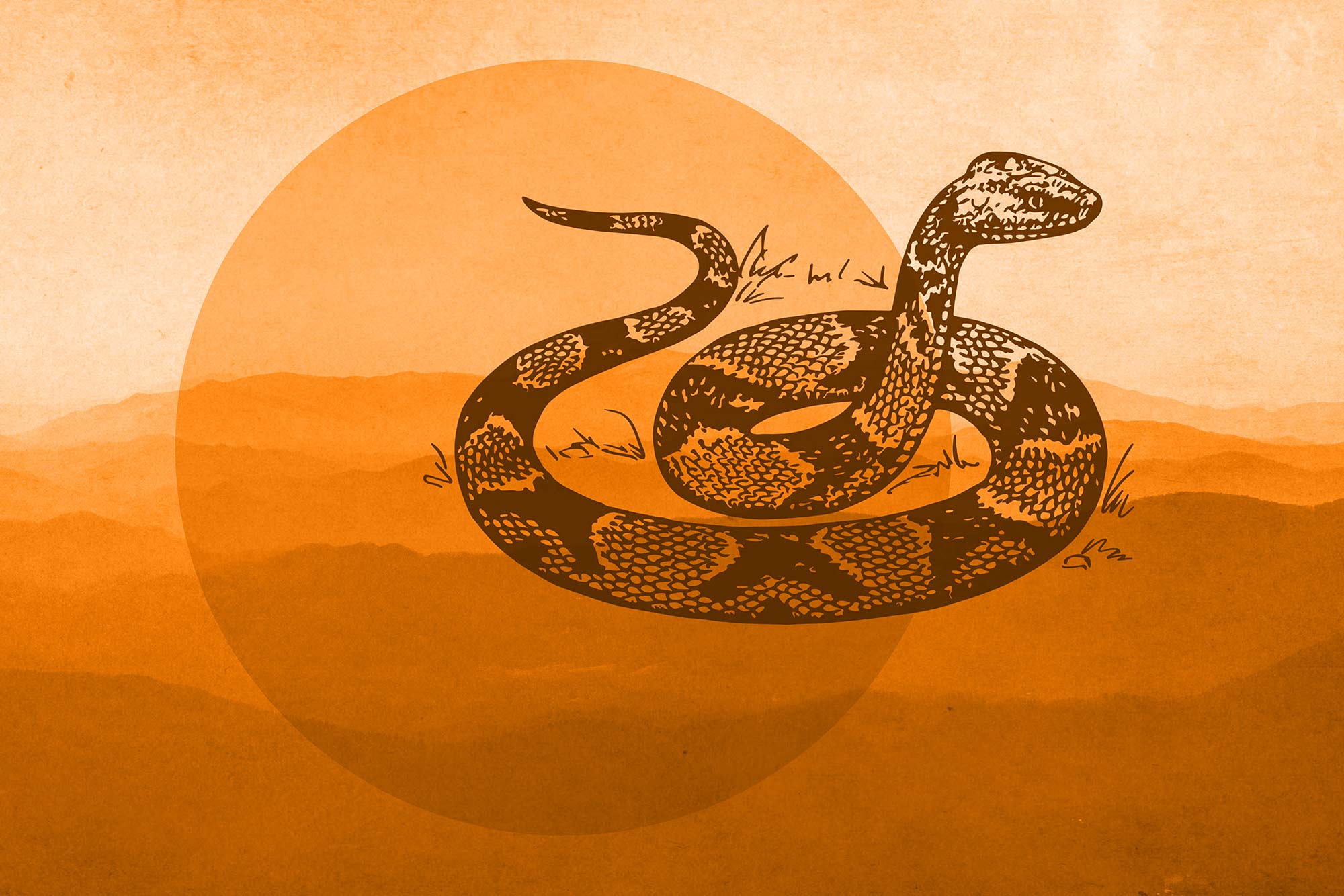Reports of copperhead sightings – and bitings – are once more on the rise in Central Virginia.
“We have already seen at UVA Health, and at other facilities covered by UVA Health’s Blue Ridge Poison Center, numerous copperhead bites,” said Dr. Chris Holstege, who directs the center. “The first of the year were actually young children with extremity bites.”
Holstege said the number of poisonous bites, called envenomations, increase as humans and snakes share outdoor activities.

“Anecdotally, I am personally seeing more envenomations that are accidental compared to earlier in my career where envenomations were occurring from individuals trying to handle the snakes rather than avoiding them,” Hostege said. “It is wonderful to see more of the population becoming engaged in outdoor activities for health and wellness, but those engaged should also be careful.”
He offered the following advice:
- Check the ground before sitting at a tree base.
- Wear boots when hiking and avoid footwear like sandals.
- Use a flashlight at night when walking and watch where you step.
- Be aware that banks of streams, rivers and lakes are common locations to find snakes.
- Never pick up a snake, alive or thought to be dead. (Often those considered dead on the side of the road are actually alive and warming themselves on asphalt.)
Number of Copperhead Bites Per Month
Data from the Blue Ridge Poison Center shows for the past three years copperhead bites start increasing in May and June and peak in July. This year, Hostege’s center recorded 18 bites in May and 5 so far this month. (Graphic by Jonelle Kinback, University Communications)
Virginia is home to 30 species of snakes. Of those, only three are venomous: the copperhead, the timber rattlesnake and the water moccasin, also known as the cottonmouth. The copperhead far outnumbers the others in that subset in the Old Dominion, and copperhead bites to humans and pets are most often reported between May and October.
With warm weather enticing people and snakes into the open, UVA Today is returning to a story on copperheads first published a year ago. Read on for more from Holstege on ways to enjoy the outdoors while protecting yourself and the ones you love.

A copperhead’s skin features a distinctive hourglass pattern.
Q. Where are copperheads found?
A. There is a temperature range that they prefer. The snakes will typically prefer the 80s. If it starts getting too hot, they’ll go into cooler places. But if it gets too cold, they’re going to go and hunker down into denser areas, too. They like wood piles, because the temperature is fairly stable and it’s easy for them to get into them. I’ve treated numerous bites after people were taking wood out of a wood pile.
You have to be careful in the evenings when it gets cooler and they come out. They may go, for example, along the side of a blacktop road and warm themselves. They can get into garages. They can get under the covers of things – for example, if I have a grill that’s covered up on the back porch. They like places where they can shelter and be protected.
Q. Are copperheads aggressive?
A. I think if you’re trying to pick them up, they are. I don’t think they’re overly aggressive otherwise. Because they don’t have a rattle, people cannot hear copperheads, so they don’t notice them as easily as a timber rattler, which we have in the mountains. When you hear that rattle, that’s when you are put on pause and you back up. But from an aggressive standpoint, most of the bites that I see, the envenomations, the individuals are trying to pick up or are messing with a snake.
In the second-most-common scenario, a person minding their own business might rapidly do something like accidentally stepping on a copperhead, which then defends itself.
Q. What happens to humans when they are bitten?
A. It all depends on the amount of venom that is excreted. Approximately 10% of bites are “dry bites,” in which no venom is released.

Copperheads have a copper-colored head and their eyes are yellow, with black vertical, narrow pupils, much like a cat.
If injected, what initially will happen is the venom goes into the subcutaneous tissues and starts to cause pain. The venom is meant to digest tissues, and there are nerve fibers that lead to pain. It damages the blood vessels, so that bite victim will then get bruising. The body’s own inflammatory responses will be set off, so you’re going to get swelling in that area. And if it’s a large amount of venom, it can go through the lymphatics and do more damage as it permeates through your tissue. Any movement causes pain.
Copperheads fortunately do not do significant damage to our cardiovascular system or hematologic system, so we don’t tend to bleed in other places. It is only at the local site.
Q. After being bitten, what should a person do?
A. The primary thing is to seek medical attention and see if you need the antidote, which is an antivenom. You do not want to put a constriction band on it. You don’t want to suck it. You don’t want to cut it. You don’t want to put ice on it. You don’t want to put warmth on it. The only thing that you can really do is get antivenom. You can splint the bite area to provide comfort until you get to a medical professional.
Q. How quickly should you seek medical attention?
A. As soon as possible. Antivenom works better if it’s used sooner. It is administered intravenously.
Q. What are the dangers if people do not get treated?
A. Things can progress to a point where you have a lot of tissue damage around the site of the bite. If you’re bitten on the hand, for example, and don’t come in right away and the finger gets really swollen, it may be hard to even get antivenom to that finger. We’ve had people who have lost digits in the past.
If bitten by the timber rattler, there’s certainly the potential of dying from a bite. Those snakes don’t go east of the Blue Ridge Mountains. There are many more copperheads in Virginia.
Q. What should people do to avoid copperheads?
A. Be careful about wherever you’re putting your hands and feet this time of year. The snakes are out. I see quite often people will go out in bare feet when they let the dog go to the bathroom in the evening. I even had one guy whose dog was barking at the bushes and he put his hand in to separate the bushes and got bit by the snake.
Q. When will the copperheads go away?
A. The spate of bites usually ends by late October when it gets colder. The snakes will then hibernate. I have seen bites as late as December. I had a meter reader who was clipping brush away and there was a snake. It happened to be a warm December day. That’s probably the latest in the season that I’ve seen it.
Media Contact
University News Senior Associate Office of University Communications
jak4g@virginia.edu (434) 243-9935
Article Information
July 5, 2025






